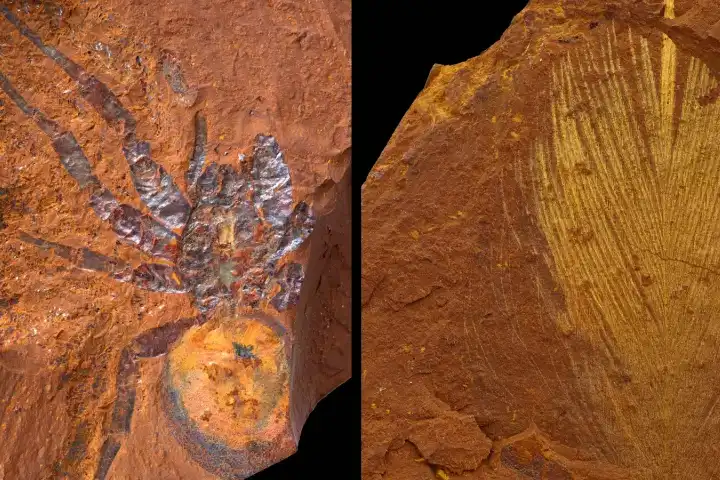Contrary to what it looks like today, findings from Australia's dead heart throws up a surprising revelation, that the now mostly arid region was once flourishing rainforests. What was discovered was an assortment of fossils which were exceptional and included that of giant cicadas, tiny fish, trapdoor spiders and also an ancient bird’s feather, as per a report in livescience.com.
All this was found by the palaeontologists in New South Wales in a place that is called Lagerstätte, meaning storage site in German. So dry was the area that John Walter Gregory, a British geologist, 100 years ago, called it the “dead heart of Australia”.
Situated in a private land, the location of Lagerstatte was kept secret to ensure that illegal fossil collectors don’t land up there, allowing the experts to dig out the remains of animals and plants who were present there between 16 million and 11 million years ago.
What the researchers found was distinctive in the record of Australian fossils of Miocene Epoch, according to the study, the findings of which were published in Science Advances journal. This Epoch is from 23 million to 5.3 million years ago. The earlier discoveries were teeth and bones of big animals, which had been well preserved in the dry landscape of the continent. The present collection was different in the sense that it had fossils of delicate and small animals like insects, spiders, as well as plants from the Miocene rainforest.
Also read: Mexico’s mysterious Red Mangroves reveal how rising sea levels can hit environment
Using scanning electron microscopes (SEM), the researchers examined the fossils and were able to get glimpses of individual cells and subcellular structures. So revealing were the images that some of them divulged the last meal of the creatures. These included larvae, fish and dragonfly wings which were partially digested inside the stomach of the fishes. Other fossils depicted scenes in which pollen grains were stuck to insects’ bodies and a freshwater mussel clinging to a fish’s fin.
Talking about the find, the lead author of the study, Matthew McCurry observed: "This site gives us unprecedented insight into what these ecosystems were like. We now know how diverse these ecosystems were, which species lived in them and how these species interacted." McCurry, is a curator of palaeontology at the Australian Museum.
The site is named McGraths Flat, after the farmer who reported finding fossilised leaves in his fields, and was visited by the palaeontologists in 2017. Commenting on their investigation, McCurry said: “We were pleased to discover that the site yields a much wider range of fossils, including the remains of insects, spiders and fishes.”
The measurement of the rock layer bearing the fossils is between 11,000 and 22,000 square feet and so far palaeontologists have dug up nearly 500 square feet, informed McCurry.
After a passage of time which is millions of years, scientists are putting together the fossils to create the picture of the Australian rainforest, now extinct. Among the array of things found include flowering plant leaves, fungal spores, pollen, fish specimens numbering more than a dozen, "a wide diversity of fossilized insects and arachnids," and a bird’s feather which was about a modern sparrow size, the authors reported.
On analysing the leaves, it was estimated that the average temperature then was nearly 63 degrees Fahrenheit or 17 degrees Celsius.
Also read: Fossils discovered of the giant eagle who ruled Australia’s Skies 25 Million Years Ago
Informing that till now only four fossil spiders had been known from Australia while researchers have so far discovered 13 of them at the McGrath Flats, McCurry remarked: "I find the spider fossils the most fascinating.”
Another discovery that was exciting for the scientists was preserved soft tissues in the feather and in the fishes' eyes and skin as they revealed melanosomes, the pigment-storing cell structures. While the colour is not preserved, the researchers will compare attributes like size, shape, and stacking patterns in the fossil melanosomes to those in modern animals. This method will enable them to reconstruct the patterns and colours in extinct species, said Michael Frese, the study’s co-author in a statement.
Frese is an associate professor of science at Australia's University of Canberra.
Elaborating on the work to be done in the future, McCurry remarked: “This is really only the beginning of the work on the fossil site. We now know the age of the deposit and how well-preserved the fossils are, but we have years of work ahead of us to describe and name all of the species we are finding. I think that McGraths Flat will become extremely important in building a more accurate picture about how Australia has changed over time."




















